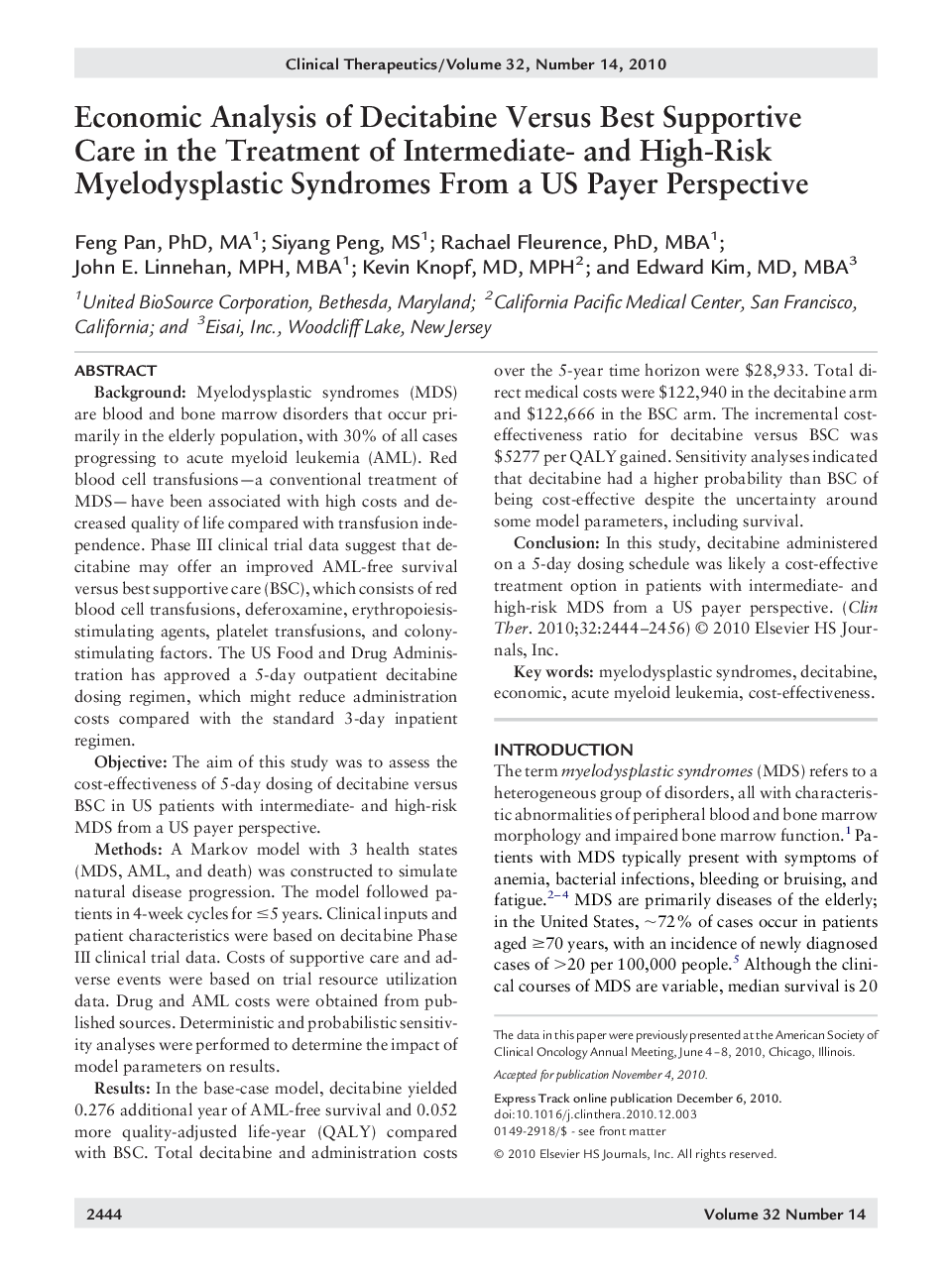| کد مقاله | کد نشریه | سال انتشار | مقاله انگلیسی | نسخه تمام متن |
|---|---|---|---|---|
| 2528551 | 1119974 | 2010 | 13 صفحه PDF | دانلود رایگان |

BackgroundMyelodysplastic syndromes (MDS) are blood and bone marrow disorders that occur primarily in the elderly population, with 30% of all cases progressing to acute myeloid leukemia (AML). Red blood cell transfusions—a conventional treatment of MDS—have been associated with high costs and decreased quality of life compared with transfusion independence. Phase III clinical trial data suggest that decitabine may offer an improved AML-free survival versus best supportive care (BSC), which consists of red blood cell transfusions, deferoxamine, erythropoiesis-stimulating agents, platelet transfusions, and colony-stimulating factors. The US Food and Drug Administration has approved a 5-day outpatient decitabine dosing regimen, which might reduce administration costs compared with the standard 3-day inpatient regimen.ObjectiveThe aim of this study was to assess the cost-effectiveness of 5-day dosing of decitabine versus BSC in US patients with intermediate- and high-risk MDS from a US payer perspective.MethodsA Markov model with 3 health states (MDS, AML, and death) was constructed to simulate natural disease progression. The model followed patients in 4-week cycles for ≤5 years. Clinical inputs and patient characteristics were based on decitabine Phase III clinical trial data. Costs of supportive care and adverse events were based on trial resource utilization data. Drug and AML costs were obtained from published sources. Deterministic and probabilistic sensitivity analyses were performed to determine the impact of model parameters on results.ResultsIn the base-case model, decitabine yielded 0.276 additional year of AML-free survival and 0.052 more quality-adjusted life-year (QALY) compared with BSC. Total decitabine and administration costs over the 5-year time horizon were $28,933. Total direct medical costs were $122,940 in the decitabine arm and $122,666 in the BSC arm. The incremental cost-effectiveness ratio for decitabine versus BSC was $5277 per QALY gained. Sensitivity analyses indicated that decitabine had a higher probability than BSC of being cost-effective despite the uncertainty around some model parameters, including survival.ConclusionIn this study, decitabine administered on a 5-day dosing schedule was likely a cost-effective treatment option in patients with intermediate- and high-risk MDS from a US payer perspective.
Journal: Clinical Therapeutics - Volume 32, Issue 14, December 2010, Pages 2444–2456